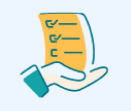Elderly Blood Pressure Chart: Normal and High Blood Pressure by Age

Your blood pressure is the barometer of your overall circulatory health. Your circulatory system is made up of your heart and blood vessels, which carry oxygen and nutrients throughout your body. But did you know that over 70% of U.S. seniors have high blood pressure? Also called hypertension, high blood pressure is a major health risk that can lead to heart disease, stroke, and chronic kidney disease. Read on for an elderly blood pressure chart, plus explanations of low, normal, and elevated blood pressure and other types of hypertension.
Let our care assessment guide you
Our free tool provides options, advice, and next steps based on your unique situation.
Key Takeaways
- Blood pressure above 130/80 mm Hg is considered high. Your loved one should consult with their doctor if their blood pressure is consistently high.
- Blood pressure tends to increase with age. Many factors can contribute to this, so the exact cause is undetermined.
- Eating a healthy, low-sodium diet can help keep blood pressure in a healthy range. Exercising, avoiding alcohol, and losing weight can also help.
- Your loved one can monitor their blood pressure at home. Occasional high blood pressure may be normal, but consistently high blood pressure is a concern.
Elderly blood pressure range for men and women
Blood pressure is measured in two numbers: systolic and diastolic. The top number is the systolic blood pressure, which measures the pressure caused by the heart contracting and squeezing out blood. The bottom number is diastolic blood pressure, which measures the pressure when the heart relaxes and fills with blood. The abbreviation mm Hg stands for millimeters of mercury, the chemical element that was used in the first accurate blood pressure gauges.[02]
| Blood pressure categories for adults 65+ | Systolic mm Hg | Diastolic mm Hg |
|---|---|---|
| Low blood pressure | 90 or lower | 60 or lower |
| Normal blood pressure | Lower than 120 | Lower than 80 |
| Elevated blood pressure | 120-129 | Lower than 80 |
| High blood pressure stage 1 (severe) | 130-139 | 80-89 |
| High blood pressure stage 2 (more severe) | 140 or higher | 90 or higher |
| High blood pressure crisis (see your doctor immediately) | 180 or higher | 120 or higher |
Blood pressure guidelines for men and women over 65
The American College of Cardiology (ACC) and the American Heart Association (AHA) currently recommend that men and women 65 and older aim for a blood pressure lower than 140/90 mm Hg.[02] However, guidelines for blood pressure targets in older adults differ among medical organizations, especially when they have other medical conditions.
The current ACC and AHA guidelines recommend that older adults with a blood pressure reading of 130/80 mm Hg or higher be treated with medication. Previous recommendations set the threshold for high blood pressure treatment with medication for adults 65 or older at 150/80 mm Hg.[03]
The following categories of blood pressure indicate the severity of hypotension or hypertension.
Low blood pressure
A blood pressure reading of 90/60 mm Hg or lower is considered too low (hypotension).[04] Excessively low blood pressure may cause dizziness or fainting and increase the risk of falls. Your loved one may want to consult their doctor if they’re experiencing any of those symptoms.
Normal blood pressure
If your loved one’s blood pressure falls within a normal range of 91/61 mm Hg to 119/79 mm Hg, they should maintain their healthy habits.
Elevated blood pressure
Older adults whose blood pressure is elevated but lower than 130/80 mm Hg can usually help regulate their blood pressure through lifestyle changes such as increasing physical activity, eating a heart-healthy diet that’s low in salt, and limiting alcohol.
This change aims to reduce the risk of heart disease in older adults. However, your loved one’s doctor will assess their overall health and any other conditions before determining the best course of action to help your aging parent control their blood pressure.
If blood pressure continues to rise from an elevated state, seniors will enter stage 1 to indicate that hypertension is at a severe level.
Stage 1 hypertension
Blood pressure ranging from 130/80 mm Hg to 139/89 mm Hg is considered stage 1. At this stage, a doctor will likely recommend medication in addition to lifestyle changes.
Stage 2 hypertension
If blood pressure readings continue to increase, seniors will be in stage 2. The treatment options for stage 1 and stage 2 hypertension may include lifestyle changes and medication. However, someone with stage 2 may take multiple medications, while someone with stage 1 hypertension may focus more on lifestyle changes
A doctor will make recommendations based on your loved one’s risk of atherosclerotic cardiovascular disease (ASCVD). This generally refers to the risk of heart attack or stroke.[02]
Crisis
If blood pressure continues to increase, seniors will be in a high blood pressure crisis. If this happens, your loved one should contact their doctor immediately. If they experience chest pain or any other symptoms of illness, they should call 911.

Let our care assessment guide you
Our free tool provides options, advice, and next steps based on your unique situation.
Why does blood pressure increase with age?
Because blood pressure tends to increase with age, and doctors don’t completely understand why, some medical societies disagree about the effectiveness and safety of treating older adults for high blood pressure.
Blood pressure is the force of blood as it flows through the arteries. As you age, your arteries may narrow and become stiff. Narrow arteries lead to an increase in blood pressure. High blood pressure can damage the walls of the arteries and the heart itself.
In some cases, high blood pressure could be a result of lifestyle, the environment, certain medications, or other conditions such as sleep apnea, kidney disease, or thyroid problems.
What you should know about fluctuating blood pressure in the elderly
As you help monitor your loved one’s blood pressure, keep in mind that if numbers fluctuate slightly throughout the day, that’s normal. Several factors influence your blood pressure numbers. For example, your blood pressure may be lower if you’re resting and higher if you’re stressed. This means you may have a normal reading in the morning and an elevated reading in the afternoon.
If you’re concerned about excessive fluctuation in your loved one’s blood pressure numbers, keep the following tips in mind:[05]
- Read the instructions to ensure you’re using your home blood pressure monitor equipment correctly. Variations in how you measure your loved one’s blood pressure can result in different readings.
- Bring your home monitor to your next doctor’s appointment to compare readings. Many pharmacies can also calibrate home blood pressure monitors.
- Be aware of white coat hypertension. In some cases, a person’s blood pressure may be high at a doctor’s office but normal at home. This could be attributed to the stress related to a doctor’s appointment.
Your loved one’s doctor may want you to keep a blood pressure diary with several readings a day for a couple of weeks to monitor any variations.

Talk with a Senior Living Advisor
Our advisors help 300,000 families each year find the right senior care for their loved ones.
How older adults can maintain a healthy blood pressure
Maintaining healthy blood pressure doesn’t have to be complicated. Simple lifestyle changes can help:[06]
- Exercising. National guidelines recommend adults of all ages engage in at least 150 minutes of moderate physical activity each week. This might include walking, outdoor chores, or weight training. If mobility or health conditions are a problem, older adults should try to be as physically active as possible.
- Losing weight. If your loved one is overweight, every 2 pounds lost can help reduce blood pressure by 1 mm Hg.
- Eating a heart-healthy diet low in salt. The DASH diet is rich in fruits, vegetables, whole grains, poultry, fish, and low-fat dairy foods. It was designed specifically to help lower blood pressure. Try to limit sodium to no more than 2,300 milligrams per day.
- Avoiding alcohol. Drinking alcohol can raise your blood pressure. If your loved one chooses to drink alcohol, limit it to no more than one drink a day for women and up to two drinks a day for men.
- Not smoking. Tobacco damages your artery walls. If your loved one smokes, find out how you can help them quit by asking their doctor.
- Managing stress. Try simple relaxation techniques, such as deep breathing exercises or meditation.
You can help your elderly loved one take an active role in lowering their blood pressure with simple lifestyle changes such as increasing physical activity and eating healthy, balanced meals. If your aging parent lives in an assisted living community, ask about exercise programs and meal options that are low in sodium. But if changes in lifestyle don’t help, prescription medications have proven very effective in lowering blood pressure.
In some cases, diet and lifestyle changes aren’t enough to lower blood pressure. Your loved one may be having a difficult time achieving significant changes in their lifestyle, or their hypertension may be too severe to treat with diet and exercise alone.
Several types of medication are available to treat high blood pressure. Talk to your elderly loved one’s doctor about whether a combination of medication, diet, and lifestyle changes may help control their blood pressure.
American Heart Association. Understanding blood pressure readings.
Benetos, A., Petrovic, M., and Strandberg, T. (2019, March 28). Hypertension management in older and frail older patients. Circulation Research.
American College of Cardiology. (2017, November 13). New ACC/AHA high blood pressure guidelines lower definition of hypertension.
American Heart Association. Low blood pressure – when blood pressure is too low.
American Heart Association. Monitoring your blood pressure at home.
National Institute on Aging. National Institutes of Health. High blood pressure and older adults.
Senior living options in all states
The information contained on this page is for informational purposes only and is not intended to constitute medical, legal or financial advice or create a professional relationship between A Place for Mom and the reader. Always seek the advice of your health care provider, attorney or financial advisor with respect to any particular matter, and do not act or refrain from acting on the basis of anything you have read on this site. Links to third-party websites are only for the convenience of the reader; A Place for Mom does not endorse the contents of the third-party sites.
Make the best senior care decision
Make the best senior care decision